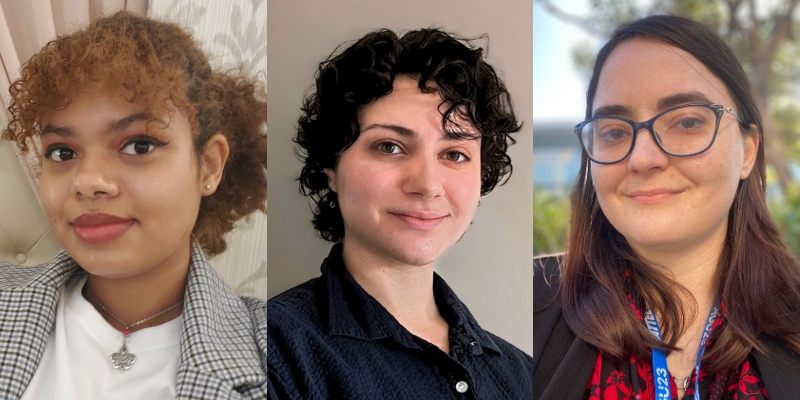Short Stories Live: A Rogue’s Christmas
Yule Be Naughty or Nice

Town Hall Seattle and UW Engage Science present
UW Engage 2024
Note: UW Engage events are approximately 90 minutes long.

Hear from UW students about their research on the genetic variants that can increase the risk of Alzheimer’s disease, how to make solar panels more effective, and flammable ice on the seafloor.
Larissa Robinson-Cooper
Larissa Robinson-Cooper uses antibodies to make the brain light up. She does this to determine how markers of Alzheimer’s disease can increase the likelihood of seizures.
You’ve probably heard people say your brain is like a computer, but did you know it can also crash like one? These “crashes” are called seizures, and they can manifest as a range of behaviors from confusion to violent spasms. Just like how an older computer is more prone to crashing, seizures are more common in older adults. This is especially true for older people who have dementia like Alzheimer’s disease. Despite knowing about this link between these two diseases for decades, scientists like Larissa Robinson-Cooper are still trying to learn how genetic variants that greatly increase risk of Alzheimer’s disease can also lead to seizures. Hopefully one day research like Larissa’s can lead to the development of new medications to better treat both diseases.
Cecily Rosenbaum
What if I told you that solar panels are transparent? Cecily studies materials that can help solar panels produce more electricity by capturing extra sunlight.
It’s no secret that our future will have to be powered through renewable energy. By 2050, we expect to be entirely reliant on renewable sources, about 30% of which will come from solar. But if our only plan to meet this target is churning out the best solar panels we have, we’ll have to make 1 square kilometer of panels every hour, every day, every year, for the next 26 years. That isn’t a great plan; if we want a world completely independent of fossil fuels, we must make solar energy more efficient and we have to start right now. Coincidentally, current solar panels aren’t capable of producing electricity from large portions of sunlight, so creating materials to capture this wasted light would help solar panels produce more energy than ever before, letting us reach our clean energy goals.
Cecily Rosenbaum is a graduate student in Physical Chemistry at the University of Washington’s Department of Chemistry. Her research focuses on identifying materials that can capture the light that solar panels can’t, and use it to produce light that can be used by the panels.
Taylor Walton
Did you know that there is flammable ice in the seafloor? Taylor is looking at the microscopic life that eats this ice to understand what will happen to it as the planet warms.
Deep in the seafloor, there is a type of ice that can be lit on fire. This ice is filled with methane, a powerful greenhouse gas. This special ice is formed when organic matter – plants and animals – falls to the bottom of the ocean and slowly degrades, eventually breaking down into methane. This methane is trapped inside the ice deep in the seafloor, but rising ocean temperatures could let it escape into the ocean & atmosphere. Luckily for us, there is microscopic life that can eat the methane and prevent it from reaching the atmosphere. This talk will cover how this burning ice is eaten by microbes, and the tools scientists use to study life deep in the seafloor.
Taylor Walton is a graduate student at the University of Washington’s School of Oceanography, researching how methane, a powerful greenhouse gas, is consumed by microscopic life deep in the seafloor. They are looking at the chemical footprints left behind by these elusive microbes around the globe, to see how widespread the microbes are.
Presented by Town Hall Seattle and UW Engage Science.
Yule Be Naughty or Nice
Rental Partner: North Corner Chamber Orchestra presents
Compositions by Handel, Frances-Hoad, Britten
Town Hall Seattle and Northwest Center for Creative Aging present
Theatre Arts at Any Age